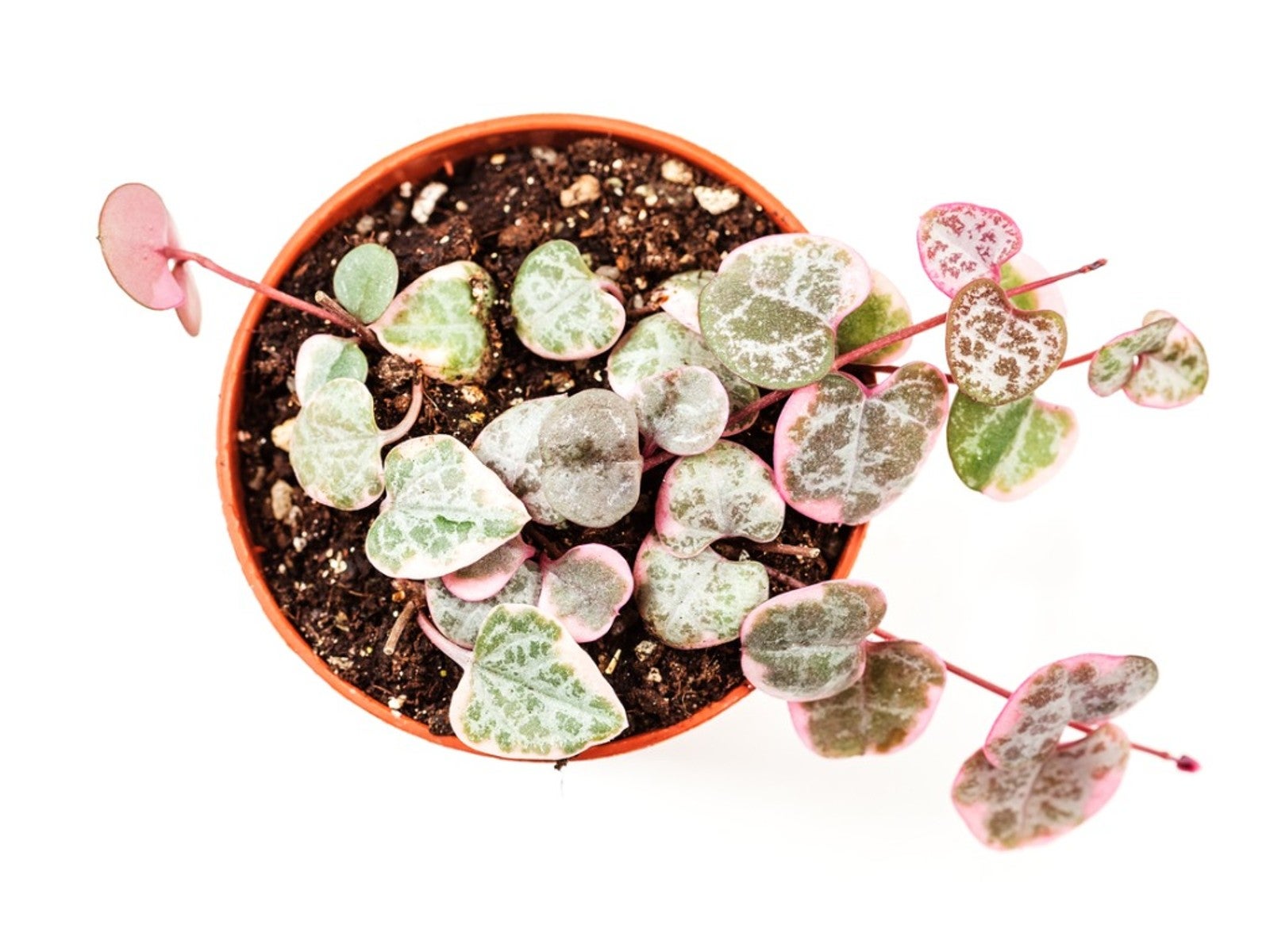Rosary Vine Houseplants: How To Grow Rosary Vines Indoors


Rosary vine is a plant full of distinctive personality. The growth habit appears to resemble beads on a string like a rosary, and it is also called string of hearts. Rosary vine string of hearts is native to Africa and makes an excellent houseplant. Rosary vine plant care outdoors requires a location in USDA zones 10 and above. Otherwise, rosary vine houseplants are the solution if you wish to grow this funky little plant.
Rosary Vine String of Hearts
Ceropegia woodii is the scientific designation for the wiry stemmed plant. Rosary vine houseplants have pairs of heart-shaped leaves about every 3 inches (7.5 cm.) along the slender stem. The sparse foliage adds to the unique look of the plant. The leaves are etched lightly on the top surface with white and on the underside with purple. The stems drape over a pot or container and hang down to 3 feet (1 m.). Little bead-like structures form on the stems at intervals between the leaves. Rosary vine plant care is minimal and the string of hearts has a high heat tolerance and light requirement. Choose the sunniest room of the house for growing Ceropegia rosary vine.
How to Grow Rosary Vines
The little bead-like pearls on the stems are called tubercles, and form after the plant has produced small tube-like purple flowers. The tubercles will root and produce another plant if the stem touches soil . If you are just in love with your plant and wonder how to grow rosary vines to share, take a look at the tubercles. You can pull them off, lay them on the surface of the soil and wait for roots. It is that simple to propagate and grow rosary vines.
Rosary Vine Plant Care
Rosary vine houseplants are old-fashioned indoor greenery that enchant with their thick heart-shaped leaves and slim stiff stems. Use a container with good drainage holes and plant string of hearts in average potting soil amended with one-third sand. This vine must not be kept too wet or it is prone to rot. Allow the soil to dry out completely between watering. The plant goes dormant in winter, so watering should be even less frequent. Fertilize in spring with a half dilution of food every two weeks. You can cut off errant stems, but pruning is not strictly necessary.
Growing Ceropegia Rosary Vine Outdoors
Gardeners in zones 10 and above should be cautioned about growing this funny plant outside. The tubercles spread easily and it takes only the lightest touch to dislodge them from the parent plant. That means rosary vine can spread easily and quickly. Try it on a rockery or trailing over a wall. Just watch out for the pearly little balls and their jackrabbit quick propagation.
Gardening tips, videos, info and more delivered right to your inbox!
Sign up for the Gardening Know How newsletter today and receive a free copy of our e-book "How to Grow Delicious Tomatoes".

Bonnie Grant is a professional landscaper with a Certification in Urban Gardening. She has been gardening and writing for 15 years. A former professional chef, she has a passion for edible landscaping.
-
 Try The Trend – Turn Any Bed Into A Keyhole Garden With This Clever In-Ground Composter
Try The Trend – Turn Any Bed Into A Keyhole Garden With This Clever In-Ground ComposterKeyhole gardening is an efficient and sustainable practice that saves space. Get started on this DIY project quickly and easily with an in-ground composter.
By Bonnie L. Grant
-
 4 Superfast Composting Methods: Turn Waste Into Garden Gold In 30 Days Or Less
4 Superfast Composting Methods: Turn Waste Into Garden Gold In 30 Days Or LessTry the fastest composting methods to turbocharge your pile and transform kitchen scraps and garden waste into finished compost in just a few weeks.
By Mary Ellen Ellis
